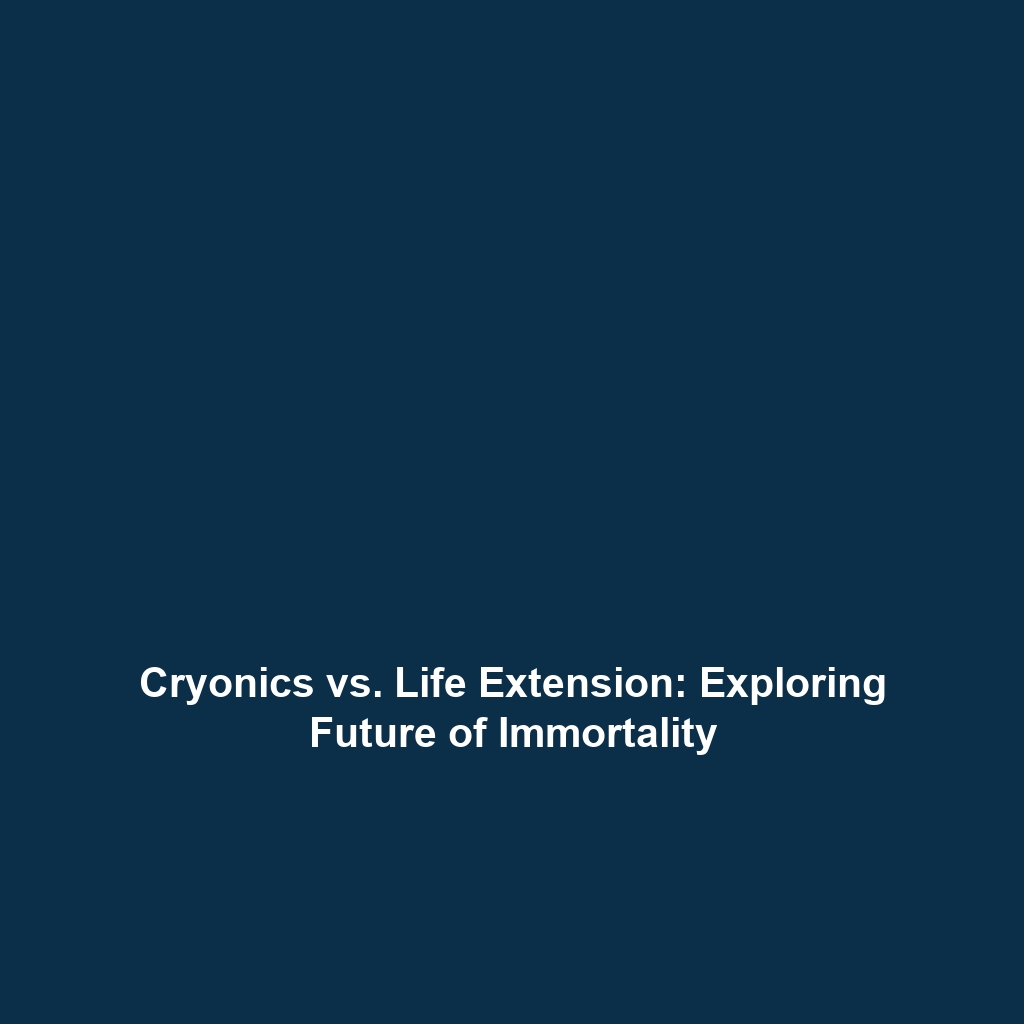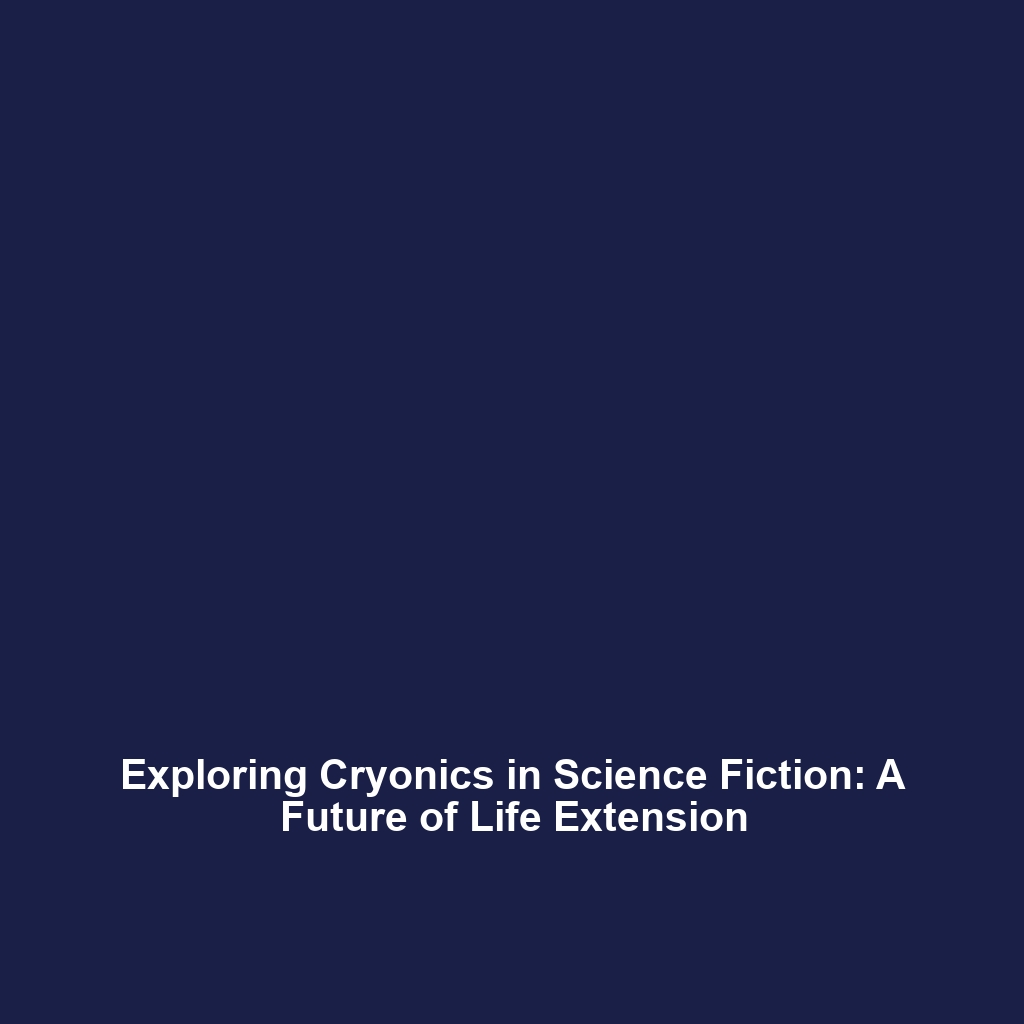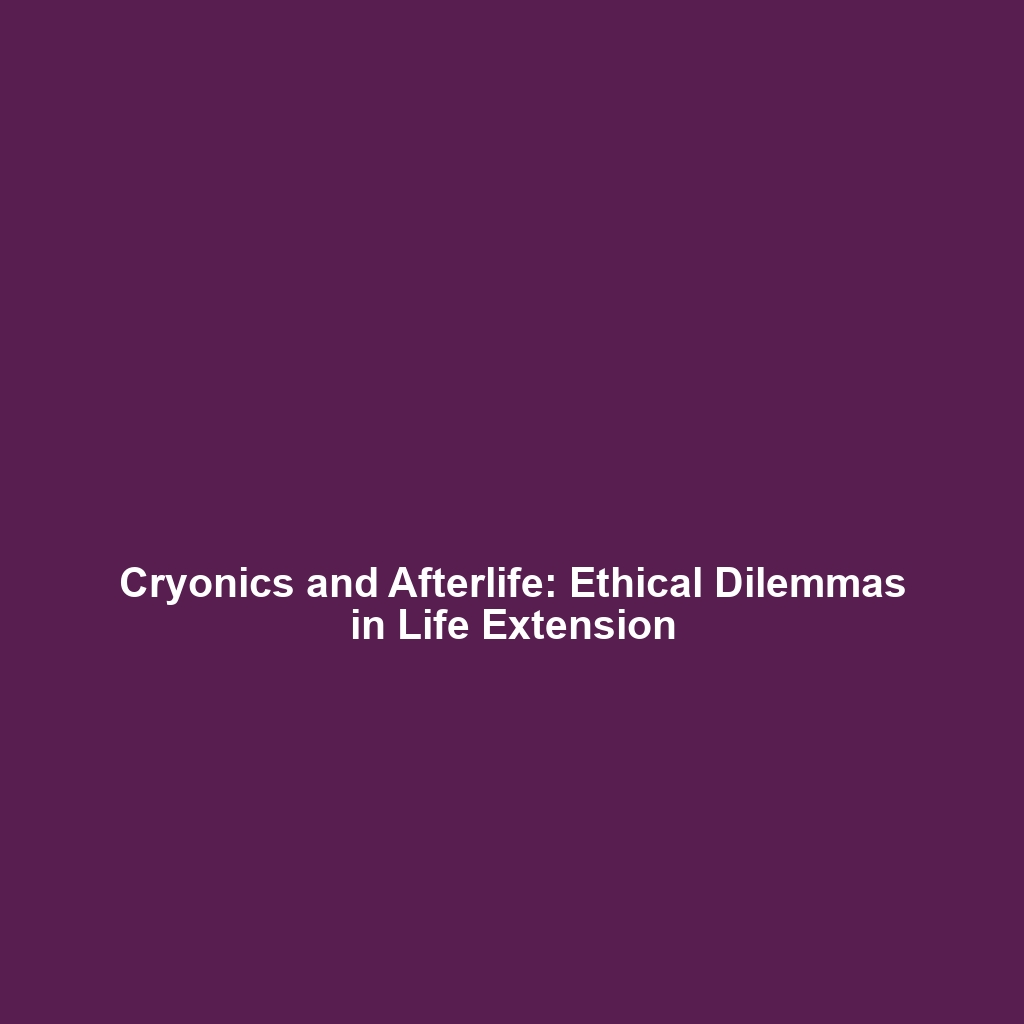Cryoprotectants: Special Chemicals Used to Prevent Damage to Cells During Freezing
Introduction:
Cryoprotectants are essential compounds employed in the process of cryonics and life extension, designed to mitigate cellular damage that can occur during the freezing process. This technology is pivotal for preserving biological samples, tissues, and even entire organisms for potential future revival. Despite their importance, no current technology fully prevents all forms of cellular damage, highlighting both the potential and limitations of cryopreservation. Understanding cryoprotectants is crucial for advancing methods in cryonics and extending human life.
Key Concepts of Cryoprotectants
The use of cryoprotectants hinges on several key concepts:
- Definition: Cryoprotectants are chemicals that reduce ice formation during freezing, thereby protecting cells from damage.
- Mechanism of Action: These compounds work by lowering the freezing point of water and minimizing ice crystal formation within cells.
- Types of Cryoprotectants: Common cryoprotectants include dimethyl sulfoxide (DMSO) and glycerol, each with specific properties and applications.
The role of cryoprotectants is integral to cryonics and life extension, as successful application can lead to advancements in organ transplants, fertility preservation, and other medical fields.
Applications and Real-World Uses
Cryoprotectants have several significant applications within the realms of cryonics and life extension. Examples include:
- Tissue Preservation: Cryoprotectants are used to preserve organ tissues for transplantation, extending their viability.
- Cell Banking: In stem cell research, cryoprotectants allow for the long-term storage of vital cell lines.
- Fertility Treatments: Cryoprotectants enable the freezing of oocytes and sperm, aiding in reproductive technologies.
Understanding how cryoprotectants are used in these applications enhances our approach to cryonics and the possibilities in life extension.
Current Challenges
The study and application of cryoprotectants face numerous challenges:
- Cellular Toxicity: Certain cryoprotectants can be toxic to cells at high concentrations.
- Vitrification Limitations: Achieving effective vitrification without damaging the cellular structures remains a significant hurdle.
- Standardization Issues: Variations in cryoprotectant effectiveness across different cell types necessitate more research.
Future Research and Innovations
The future of cryoprotectant research is promising, with ongoing studies focusing on:
- Advanced Formulations: Development of new cryoprotectant mixtures that reduce toxicity and improve preservation methods.
- Nanotechnology: Utilizing nanotechnology to enhance cryoprotectant delivery and reduce ice crystal formation.
- Personalized Cryopreservation: Research into custom cryoprotection protocols tailored to individual cellular responses.
Conclusion
Cryoprotectants play a crucial role in preserving cellular integrity during freezing processes, making them vital to advancements in cryonics and life extension. While challenges remain, ongoing research promises to enhance their efficacy and safety. To stay informed about the latest in cryonics and life extension, consider exploring other related topics on our site for further insights.
Learn more about cryopreservation techniques and how they influence future medical advancements.






